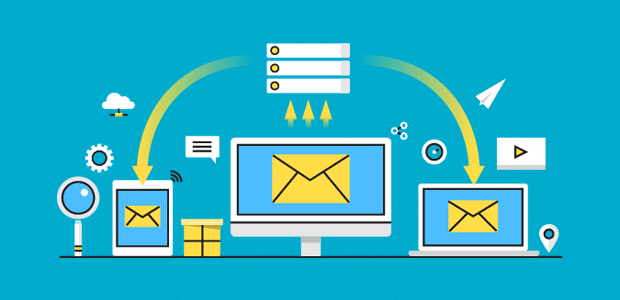In the world of email marketing, ensuring that your messages reach your audience is paramount. Email deliverability refers to the ability of your emails to land in the inbox rather than the dreaded spam folder. Poor deliverability can significantly impact your marketing efforts, reducing engagement and hindering conversions. In this blog, we’ll explore effective strategies to improve your email deliverability and ensure your messages reach their intended recipients.

Table of Contents
Toggle1. Build a Quality Email List
The foundation of good email deliverability starts with a quality email list. Focus on gathering subscribers who genuinely want to receive your content. Here are some tips for building and maintaining a healthy list:
- Use Double Opt-In: Implement a double opt-in process where subscribers confirm their email addresses after signing up. This ensures that the email addresses on your list are valid and that recipients genuinely want to hear from you.
- Regularly Clean Your List: Remove inactive subscribers and invalid email addresses periodically. This helps maintain a high engagement rate and reduces the likelihood of being marked as spam.
- Segment Your Audience: Segmenting your email list allows you to send targeted messages that resonate with specific groups. This leads to higher engagement rates and improves deliverability.
2. Authenticate Your Emails
Email authentication is crucial for improving deliverability and building trust with email service providers (ESPs). Proper authentication helps verify that your emails are legitimate and not from spammers. The three primary authentication methods are:
- SPF (Sender Policy Framework): This method allows you to specify which mail servers are permitted to send emails on behalf of your domain. Setting up SPF helps prevent unauthorized senders from using your domain.
- DKIM (DomainKeys Identified Mail): DKIM adds a digital signature to your emails, allowing the recipient’s server to verify that the email has not been altered in transit and that it was sent by an authorized server.
- DMARC (Domain-based Message Authentication, Reporting, and Conformance): DMARC builds on SPF and DKIM, providing instructions to the recipient’s server on how to handle emails that fail authentication checks. Setting up DMARC helps protect your domain from phishing attacks and enhances your sender reputation.
3. Monitor Your Sender Reputation
Your sender reputation is a score that email service providers assign based on various factors, including engagement rates, bounce rates, and spam complaints. A poor sender reputation can negatively impact your deliverability. To monitor and maintain a good sender reputation:
- Use Monitoring Tools: Many email marketing platforms offer analytics and monitoring tools that track your sender reputation. Use these insights to identify and address issues promptly.
- Pay Attention to Engagement Metrics: Keep an eye on key metrics such as open rates, click-through rates, and unsubscribe rates. High engagement rates indicate that your audience values your content, while low rates can signal problems.
4. Optimize Your Email Content
The content of your emails plays a significant role in deliverability. Here are some best practices for optimizing your email content:
- Avoid Spam Trigger Words: Certain words and phrases (e.g., “free,” “guarantee,” “limited time”) can trigger spam filters. Review your content and avoid using excessive promotional language.
- Use a Clear and Concise Subject Line: Craft compelling subject lines that accurately represent the content of your email. Misleading subject lines can lead to higher unsubscribe rates and spam complaints.
- Include a Text Version: Always include a plain text version of your email along with the HTML version. Some email clients prefer plain text, and including both can improve deliverability.
5. Implement Proper Sending Practices
Following best sending practices can significantly enhance your email deliverability. Consider the following:
- Maintain Consistent Sending Patterns: Avoid sudden spikes in email volume. Gradually increase your sending volume over time, especially if you’re a new sender. This helps establish trust with email service providers.
- Send Relevant Content: Ensure your emails are relevant and valuable to your audience. This encourages engagement and reduces the likelihood of being marked as spam.
- Optimize Send Times: Experiment with different send times to determine when your audience is most likely to engage. Timing can influence open rates and overall engagement.
6. Monitor Feedback Loops
Feedback loops are mechanisms provided by some ISPs that allow senders to receive reports on spam complaints. By monitoring feedback loops, you can gain valuable insights into how recipients perceive your emails:
- React Promptly to Complaints: If you receive complaints about your emails, take them seriously. Analyze the reasons behind the complaints and make necessary adjustments to your content and strategy.
- Adjust Your Strategy: Use feedback to refine your targeting and messaging. If certain segments of your audience are consistently reporting your emails as spam, consider revising your approach for those groups.
7. Test and Optimize Your Campaigns
Continuous testing and optimization are vital for improving email deliverability. Consider the following:
- A/B Testing: Test different subject lines, sending times, and content to determine what resonates best with your audience. Use the insights gained from these tests to refine your campaigns.
- Analyze Results: Regularly analyze the performance of your email campaigns. Look for trends in engagement metrics and adjust your strategy accordingly.
Conclusion
Improving email deliverability is essential for the success of your email marketing campaigns. By building a quality email list, authenticating your emails, monitoring your sender reputation, optimizing your content, and following best sending practices, you can significantly enhance your chances of reaching your audience’s inbox. Remember, email deliverability is an ongoing process that requires continuous monitoring and optimization. Implement these strategies today to boost your email marketing effectiveness and drive better results!


No responses yet